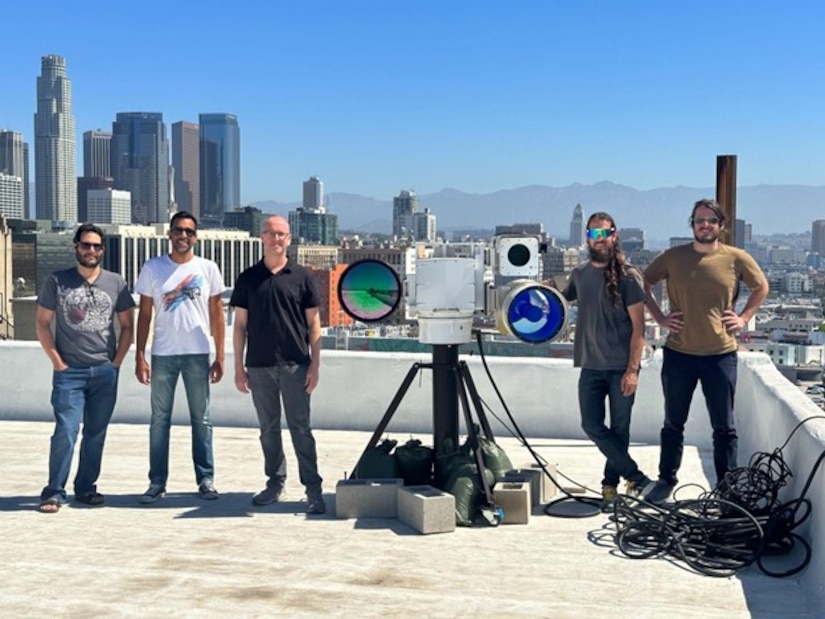In a significant development aimed at safeguarding the US capital, Washington, the Department of Defense disclosed that plans are underway to install an advanced AI-driven airspace surveillance system.
The Pentagon revealed plans to allocate $100 million for a new AI-powered airspace monitoring system after the successful 18-month prototype demonstration, according to an announcement on August 28.
The primary objective behind this installation is to reinforce the security measures in place for the nation’s capital, with an added capability to expand its reach to various Defense Department and US government installations and systems.
Air Force Lt. Col. Kurtis Engelson, the materiel leader for Battle Control Systems, said, “It’s a cutting-edge surveillance, identification, and tracking system that monitors and defends the controlled airspace around Washington, DC, part of the National Capital Region-Integrated Air Defense System.”
This advancement has been realized through the collaboration of the National Capital Region-Integrated Air Defense System program and the Defense Innovation Unit.

By leveraging the rapid prototyping capabilities, a viable solution has been swiftly developed, thereby charting a clear route for the Air Force to acquire prototypes.
The air defense system in Washington, DC, is under the command and control of the North American Aerospace Defense Command (NORAD), which is headquartered in Colorado.
Teleidoscope, a company based in Los Angeles specializing in creating visual tracking software for dynamic objects, has designed this innovative AI-powered system.
According to information provided on the manufacturer’s website, their products are designed to autonomously monitor and trace dynamic entities such as UAVs, individuals, and vehicles.
Although AI agents are not designed for complete autonomy, they can serve as valuable complements to human workers, aiding them by identifying objects that might remain unnoticed by an operator, as stated by Teleidoscope.
Teleidoscope, a relatively new vendor for Defense Department contracts, secured a production agreement worth $100 million after the conclusion of an 18-month prototype demonstration in April.
The momentum of progress is evident as orders for the system deployment are presently undergoing processing, marking a notable step forward.
As part of the eagerly anticipated timeline, the system is poised to transition into active fielding and implementation by the end of this year.
Details About AI-Enabled Detection System
The AI-driven system, as highlighted by the Pentagon, is poised to bring about a substantial “tenfold increase in performance capability” compared to the current airspace monitoring platform established following the September 11, 2001, terrorist attacks.
This progression includes a range of notable enhancements, including integrating upgraded cameras and safe-to-use lasers.
These technological elements are tasked with tracking aircraft and visually alerting them when they venture into restricted airspace zones near the capital of the United States.
This suite of improvements is anticipated to yield significant benefits, particularly in bolstering air defense operators’ proficiency.
Their ability to accurately confirm the identity of aircraft is set to be greatly improved, alongside an expansion in the range over which warning lasers can be effectively employed.
This development is expected to be of practical importance, offering a rapid and reliable method of communication with pilots, especially when conventional radio attempts have proven ineffective.
The United States’ Defense Innovation Unit (DIU) plays a critical role in this initiative, which is tasked with adapting commercially available technologies and products for military applications.
The DIU envisions a broader scope for the advancements in airspace monitoring and suggests the potential for their application in safeguarding smaller military assets, including air bases and naval vessels.
Nick Ksiazek, who holds the role of DIU program manager for this initiative, elucidated that the technology boasts extensive relevance in national defense.
Its applicability extends toward safeguarding against a diverse range of threats, including those of an asymmetric nature and those posed by adversaries with similar capabilities, such as unmanned aerial systems and cruise missiles.
The Pentagon also mentioned: “The auto-tracking capabilities of the system apply to full-motion video feeds, irrespective of the domain, opening the door to augment remotely piloted aircraft video feed tracking capabilities. The software from this prototype has the potential to run on any edge device or cloud-provided, full-motion video feed.”
From a broader perspective, the system is being hailed as a substantial step in boosting the security of the United States’ capital. It also sets the groundwork for potentially utilizing AI-driven systems in the Defense Department and various US government installations and operational frameworks.
- Contact the author at ashishmichel(at)gmail.com
- Follow EurAsian Times on Google News




